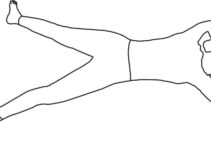Malaria is a fever in which the body’s humours have become imbalanced. The main cause of the disease is the transmission of a parasite called plasmodium through the bite of an infected female anopheles. The unhygienic conditions around you are also one of the critical factors. The contamination of water also causes malaria. Malaria is a parasitic disease that involves high fevers, shaking chills, flu-like symptoms, and anaemia.
Do’s during Malaria
- Contaminated water should be disposed of; use DDT on stagnant water.
- Use mosquito repellent/net
- The body should be covered as much as possible.
- One should digestible and light foods during malaria fever.
- Use fruits such as Oranges, papaya
- Fruit juices and lemon juices with honey are also good.
- Jaggery, Amla and Bengal gram should be given preference to maintain the level of HB
- Ensure hygiene
- Herbal fumigation
- Neem water bath is good
- Taking Tulsi decoction (15-20 leaves, 5gm ginger, 10 pepper, ½ teaspoon of pure turmeric powder are boiled for 10 minutes.) is good
- Take a warm bath twice a day.
Don’ts during Malaria
- Avoid water stagnation to prevent the breeding of mosquitoes
- Remove stagnated water from coolers, containers, garbage, etc., once a week.
- Avoid contaminated blood transfusion
- Keep unscreened doors and windows closed.
- During pregnancy, one shouldn’t travel to malaria-spread regions.
- Do not wear clothes that expose arms and legs.
- Discourage children to play outdoors in shorts and half/without sleeves clothes.
Summary
In summary, malaria is a severe disease caused by the Plasmodium parasite and transmitted by infected mosquitoes. Preventing mosquito bites, controlling mosquito breeding sites, and seeking proper medical treatment are key strategies to combat malaria. Additionally, using safe and effective methods for prevention and treatment is essential for public health.




